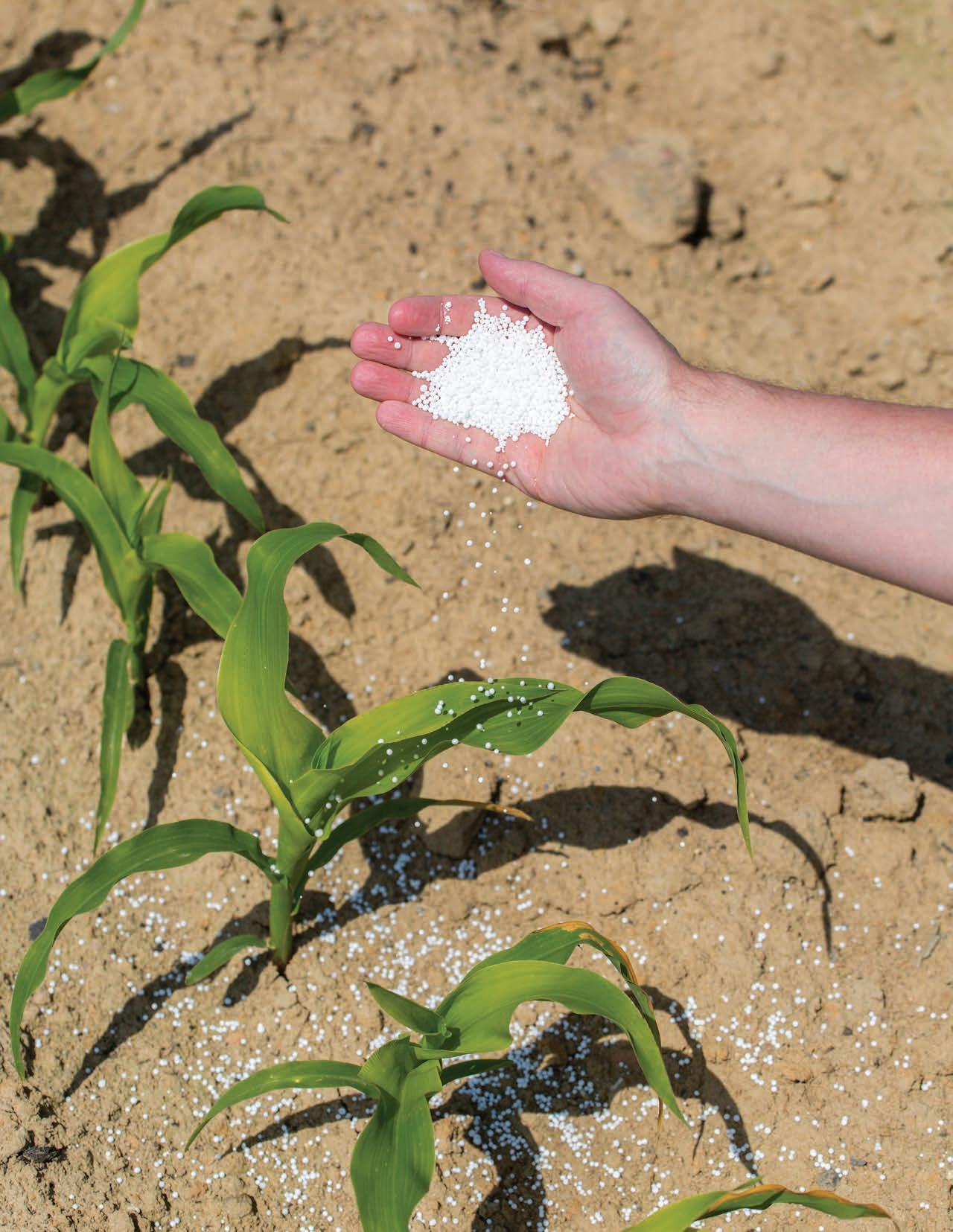
AG Mag North Central Illinois NITROGEN Protecting from loss in corn production PRSRT STD U.S. Postage PAID Permit No. 440 Sterling, IL 61081 CHANGE SERVICE REQUESTED A PUBLICATION • SUMMER 2023
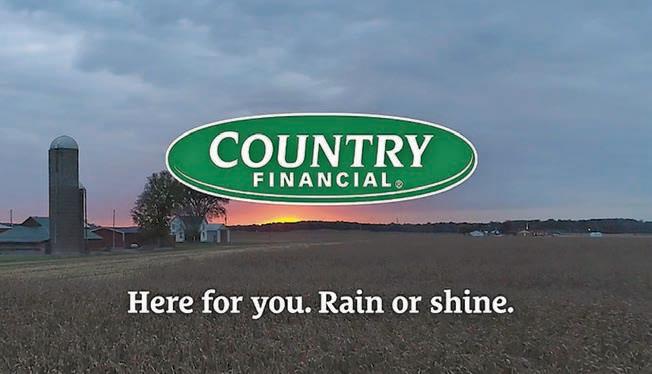
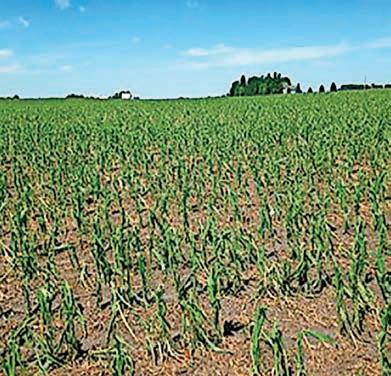
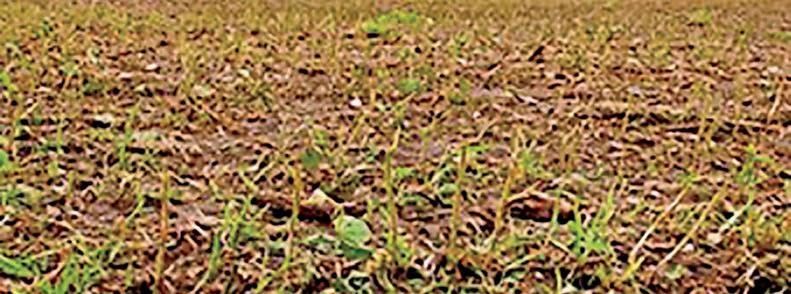
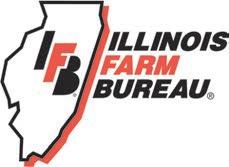
Alan Davis Crop Insurance Specialist Business Cell: (815) 303-3111 PO Box 59, Tiskilwa, IL 61368 Email: alan.davis@countryfinancial.com For those affected by the severe weather storms I feel your pain. Hail & Wind storms are unpredictable. But planning and putting together a solid Crop Insurance plan takes out the worry and stress of that unpredictability. Call me today to plan for the future and let me shoulder that risk for you! Farm. Family. Food. Partnering to benefit Illinois Farmers Policies offered: • Federal Crop Multi-Peril Insurance (Revenue or yield based) • Crop Hail policies with endorsements such as Wind • Private product insurance programs such as Added-Value Enhancement (AVE) or Soil Type Plus (STP) insure up to 95% of actual APH. Insure with a company rooted in agriculture and with you every step of the way 2 Summer 2023





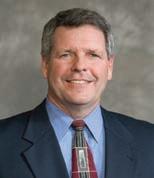
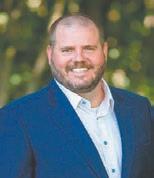

1220-506HC_-3/9/2023 (collectively, “COUNTRY”), which include COUNTRY Life Insurance Company®, COUNTRY Mutual Insurance Company®, and their respective subsidiaries, located in Bloomington, Illinois. Commercial insurance policies issued by COUNTRY Mutual Insurance Company®, Bloomington, IL. Ron Behrends Tiskilwa (815)646-4121 Tyler Hansen Walnut (815)379-9297 G.W. Leynaud Spring Valley and Princeton (815)872-0914 Mike Morris Princeton (815)872-3333 TJ Scruggs Princeton (815)872-3333 Spring Valley (815)664-4145 Michael Alvarado SM-PR2084803 Ag Mag 3
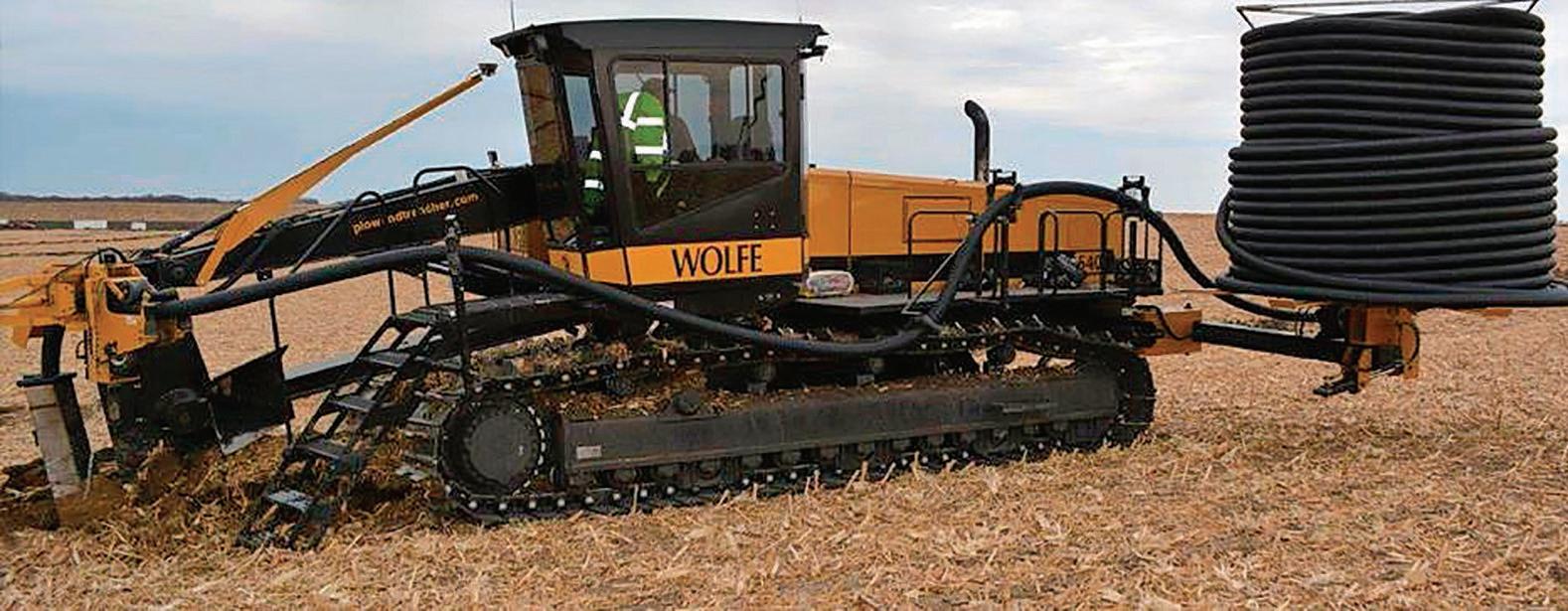

C&A FARM DRAINAGE Customer satisfaction is our goal! Quality Work - 20 yrs. experience - Dedication Discounted Pattern Tiling Prices - Dozer Work - Excavating GPS Integrated - Plow & Trencher - Tile Installation - Maintenance Colton Poignant: (309) 238-8627 Aaron Poignant: (309) 238-8626 Let us help your farm reach its potential! GPS Integrated - Plow & Trencher Tile Installation - Maintenance Customer satisfaction is our goal! Quality Work - 15 yrs. experience - Dedication Colton (309) 238-8627Aaron (309) 238-8626 Let us help your farm reach its potential! 4 Summer 2023 Court confirms EPA went out of bounds ����������������������������������������������� 5 Protect stake in nitrogen (cover) ����������������������������������������������������������� 6 Research, practical experiences to highlight strip-till conference 8 Top pest concerns for 2023 ����������������������������������������������������������������� 10 Supreme Court ruling narrows WOTUS reach ������������������������������������� 13 Fungicide put to test 16 Identify, avoid and manage troublesome wild parsnip ����������������������� 18 Groundbreaking for new Mississippi River lock ��������������������������������� 20 Ag conditions mixed across Federal Reserve districts ���������������������� 22 Sunshine after much-needed rain ������������������������������������������������������ 23 Ag Mag Bureau County Republican P O Box 340 Princeton, IL 61356-0340 815-220-6948 General Manager/ Advertising Director Jeanette Smith jmsmith@shawmedia�com Editor Jim Henry Writers Tom C Doran Zippy Duvall Chris Enroth Cyndi Young-Puyear Photographers Emily Swihart Designer Liz Klein Published by: est. 1851 Articles are the property of AgriNews No portion of the North Central Illinois Ag Mag may be reproduced without the written consent of the publisher Ad content is not the responsibility of the Bureau County Republican The information in this magazine is believed to be accurate; however, the Bureau County Republican cannot and does not guarantee its accuracy The Bureau County Republican cannot and will not be held liable for the quality or performance of goods and services provided by advertisers listed in any portion of this magazine CONTENTS
Court confirms EPA went out of bounds
It would be hard to overstate the importance of the decision by the Supreme Court in Sackett v. EPA.
ple of the strength of Farm Bureau when we work together with a united voice on behalf of all farmers and ranchers.
 Zippy Duvall American Farm Bureau
Zippy Duvall American Farm Bureau

Faced with yet another sweeping application of the term “waters of the U.S.” by the Environmental Protection Agency, the Supreme Court has set a clear and practical definition that respects the words and intent of Congress in the Clean Water Act.
While there’s still some work to be done to incorporate the court’s decision into clean water regulations, this is a massive win for farmers, ranchers and property owners all across the country.
Farmers take water quality seriously: our livelihoods depend on it. That’s why Farm Bureau has been calling for clarity when it comes to WOTUS for decades.
The 2015 and 2023 rules set vague boundaries that would allow the regulation of vast areas of land as “waters.” They expanded federal authority far beyond what Congress intended, and the Supreme Court has now unanimously rejected that overreach.
All nine justices agreed that EPA’s so-called “significant nexus” test, the agency’s tool to assert more authority over private land, was an overreach.
The justices only disagreed — five to four — on which wetlands that are “adjacent” to navigable waters can be regulated.
Let that sink in for a minute:
The Supreme Court on May 25 reined in the power of the Environmental Protection Agency, stating that wetlands are not “waters of the U S ,” as defined in the Clean Water Act
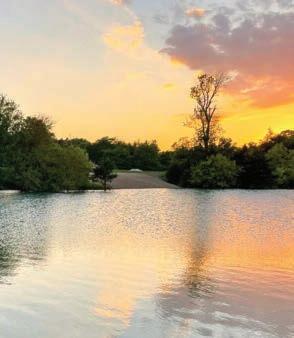
EPA’s position was rejected by all nine justices on the court. This is not a political or partisan issue. It’s common sense, and yet it took years of advocacy to get here.
EPA’s subjective “test” gave the federal government the ability to regulate mostly dry features and wetland miles from the nearest “navigable” water, based on an indefinite mix of complex scientific factors.
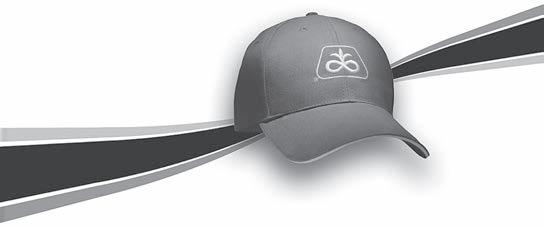
Farmers would need a team of lawyers and consultants to have any hope of determining whether their land was regulated “waters,” and many would need federal permits for basic farm work like moving dirt and building fences.
Farm Bureau has fought this land grab for years with the agencies and in the courts. Finally, the highest court in the land has said it must stop.
This victory is a powerful exam-



When the Sacketts’ case rose to the Supreme Court, AFBF organized a group of 14 national agricultural organizations and coordinated with 20 state Farm Bureau organizations to file a strategically focused set of friend-ofthe-court briefs.
We explained the impact of this issue on farming and emphasized the important role of state and local authorities in protecting land and water resources. There is no question that our advocacy made a difference.
In fact, the state Farm Bureau brief was even cited by the court. And the court adopted the exact legal framework we argued for in our national ag brief.
So, what’s next? Well, there is still work to be done. EPA’s latest 2023 WOTUS rule is still on the books.
But this decision will send EPA back to the drawing board with clear directions and boundaries.
Farm Bureau is grateful to the Supreme Court for respecting common sense and private property rights. Now it’s time for the Biden administration to do the same.
Farmers and ranchers are ready to move forward, and we’ll continue to work for clear rules that stay in bounds and let farmers farm with the careful stewardship we practice every day.
Zippy Duvall, a poultry, cattle and hay producer from Georgia, is the president of the American Farm Bureau Federation.
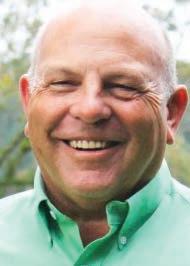
perumutual.com Michael Michlig (815) 878-4430 SHEFFIELD, ILLINOIS Right Product. Right Acre. Right People. Pioneer brand products, service, Pioneer Premium Seed Treatment and PROBulk® System Ag Mag 5
Protect Stake in Nitrogen Avoid N loss paths in growing season
By Tom C. Doran AGRINEWS PUBLICATIONS
GENESEO, Ill. — Nitrogen is among the costliest and yield-limiting inputs in corn production, and there are three pathways that investment can be lost during the growing season.
Eric Wilson, Wyffels Hybrids agronomy manager, detailed the nitrogen loss scenarios of leaching, denitrification and volatilization, along with management tips.
Here is what he had to say about each topic:
ON LEACHING
Leaching is the loss of nitrate through the soil water profile and the primary nitrogen loss pathway often discussed.
Nitrate is the most abundant form of nitrogen because typically under warm spring conditions all forms of nitrogen convert to nitrate. It does have a negative charge, so it’s not held by the soil cation exchange and it readily moves with water.
Losses are directly dependent on rainfall and temperature. However, it’s not always associated with heavy rainfall events.
In fact, a lot of heavy rainfall events result in surface runoff that doesn’t move down through that soil profile.
Something to keep in mind, if you had early-season heavy rainfall events, some of that nitrogen that you applied in
particular as anhydrous, is likely not converted to nitrate yet.
Temperature is the key. You have to have those warm temperatures for ammonia to convert to nitrate in order for it to be leached through the soil profile.
ON DENITRIFICATION
This would be the primary loss pathway under flooded conditions. This is very dependent on temperature and losses per day can range from 2%, 50 to 60 degrees, to 5% or greater, 65 degrees-plus.
Significant loss does happen under saturated soil conditions, especially when we have warmer temperatures later in the spring.
ON VOLATILIZATION
Volatilization is typically not a primary loss pathway for a lot of us, but it can happen. It’s directly associated with surface-applied fertilizers that are left unincorporated.
Keep in mind, we have to have a little bit of rainfall to get nitrogen to move down into the soil profile unless we’re doing some early spring
tillage to incorporate that.
ON MANAGEMENT
Know when to act if you suspect that you’ve had some nitrogen loss. Above-average spring rainfall, specifically between May and June, usually justifies additional nitrogen applications above what you’ve already done.

If ponding or saturated soils exist for extended periods, assume significant nitrogen loss to denitrification.
Keep in mind, these are all temperature-dependent. If it’s happening early season, and we don’t have the warm temperatures to get conversion to occur, it’s unlikely that we’ve lost a lot of nitrogen, especially if it’s still in the ammonium form.
Spring soil nitrate testing — if you’re using a spring soil nitrate test and it’s coming back low, that absolutely justifies doing an additional nitrogen application.
Tom C. Doran can be reached at 815-410-2256 or tdoran@shawmedia.com. Follow him on Twitter at: @ AgNews_Doran.

6 Summer 2023
Wilson












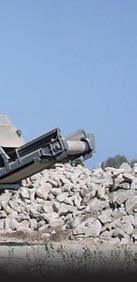







RELATIONSHIPS It’s the land you grew up on; your father always said it would be yours someday. It was his legacy and now its yours. And someday, hopefully it will be your child’s legacy too. Count on Heartland Bank to help cultivate your family’s legacy. that enable you to reap the benefits of your hard work. At Heartland Bank, we cultivate the Ag Lending Farm Management Farmland Sales and Auctions Farmland Appraisals 1-866-962-7820 www.rivervalleycoop.com Partner with River Valley Cooperative for your agronomy, energy, feed, and grain needs for your farm and home. Contact us to learn more! Skid Loader, Backhoe, Wheel Loader, Dozer & Excavator Work Black Dirt and White Rock Custom Ag Applications • Concrete Recycling Phone: 309-364-3672 Fax: 309-364-2666 312 Jefferson • Henry, IL • edhartwigtrucking@frontier.com • Basements • Water Lines • Septic Systems Fully Licensed and Insured • Sewer Lines • Footings • Driveways • Roll-Off Containers • Building Demolition • Free Estimates SM-PR2084395 250 Marquette St. LaSalle, IL 61301 815-223-0700 1300 13th Ave. Mendota, IL 61342 815-539-5656 101 N. Columbia Ave. Oglesby, IL 61348 815-883-3354 2959 Peoria St. Peru, IL 61354 815-223-9400 105 W. 1st South St. Wenona, IL 61377 815-853-4333 www.eurekasavings.com • Agricultural Real Estate Loans - Ag Equipment Loans - Operating Loans • Lines of Credit Contact the experts at Eureka Savings Bank today Your Source for Ag Financing Joe Brizgis Brad Cook NMLS#447018 Find Us On Facebook! *Loans and Lines of Credit are subject to credit approval. SM-LA2086601 Ag Mag 7
Research, practical experiences to highlight strip-till conference
By Tom C. Doran AGRINEWS PUBLICATIONS
BLOOMINGTON, Ill. — The National Strip-Tillage Conference is coming to central Illinois this summer, offering tips, ideas and techniques from experts and fellow farmers.
The conference will be held Aug. 3-4 at the Bloomington-Normal Marriott and Conference Center.
A pre-conference “In the Field” workshop will be held Wednesday, Aug. 2, at Precision Planting’s PTI Farm at Pontiac.
Topics in the general sessions include season-long nutrient management, a farmer-to-farmer panel for insights and recommendations, and strip-till as a solution for nutrient stratification’s yield impact.
There also will be classroom sessions to provide experience-based insights from the field covering such topics as cutting-edge technology, maximizing return-on-investments through management zones, integrating cattle and crop rotations, weed control strategies, making strip-till work on a low budget, and cover crops in striptill systems.
In addition, roundtable discussions are planned, covering a variety of topics.
In a preview of one of the general sessions and pre-conference tour, Noah Newman, Strip-Till Farmer technology editor, hosted a video with Jason Webster, Precision Planting lead agronomist and PTI Farm director.
Webster’s general session topic at the conference will focus on strip-till lessons that have been learned at the PTI Farm. He noted the six major topics he’ll cover during his general session presentation.
1. Comparing strip-till to other tillage programs. “What is the yield difference and more importantly putting
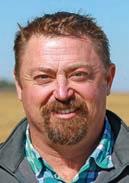
a dollar per acre cost to each program and how they compare to each other. What has been the best and what is the dollar difference on a per acre basis,” Webster said.
2. Fertilizer banding versus broadcast applications. “Due to the historic high cost of fertilizer right now, we’ve got to farm smarter, and to do that it’s not broadcasting or what I sometimes call slinging fertilizer on every square inch of our soil,” Webster noted.
“I’ll talk about some of the longterm data we’ve collected with banding versus broadcast, and putting dry fertilizer applications in a band underneath where we’re planting and show some of the differences in yield and, most importantly, net return.
“We’re doing that in both corn and soybeans. Most all of our trials are put in both corn and soybeans. One thing growers ask me all the time, ‘Strip-till is for corn, right? Why are you doing it for soybeans?’ Well, we’re doing strip-till for soybeans, too. It works just the same.”
3. Utilizing strip-till for early planted soybeans. “Some of our planting date data has been really encouraging, but how do you do it if you’re in a no-till situation with colder, maybe wetter soils? We use strip-till to make that wide band. You have that nice black soil grabbing heat from the sun, that thermal radiation warms the soil up where I can sneak in and do some of my early plant soybeans and it’s really been successful for us,” Webster said.
4. Liquid versus dry fertilizer. “As we traveled the country this past winter, it was really interesting talking with growers that do striptill. Some growers use dry fertilizer, others use liquid fertilizer. So, we’re in our first year of testing, looking at liquid fertilizer formulations in a strip versus what I’ll call status quo — the typical DAP and potash dry formulations. We’ll talk about some of those difference we have here on
the farm,” Webster said.
5. Fertilizer rate efficiency. “One of the questions we get a lot from growers is, ‘If I’m banding fertilizer, can I use less of it?’ Due to the high cost of fertilizer, that is a legitimate question,” Webster noted.
“We’re going to talk about some of our results of trials to see if we can reduce fertilizer if we are in a band in our strip-till. Right now, that answer is yes. We’re still trying to study it. But right now, our data would say that there could be a 25% to 50% reduction in fertilizer as long as we’re in a band. There are some exciting numbers there that we’ll talk about.”
6. Incorporating cover crops into a strip-till system. “Cover crops are a great way to hopefully increase soil health or improve soil health, but there’s some management that comes along the way that is a little difficult for growers. My experience has been corn and soybean yields have gone lower as we’ve tried to incorporate cover crop programs on the farm,” Webster stated.
“We’re using strip-till as a way to make it a lot easier to manage cover crops and still give us the ability to band fertilizer and not let the cover crop and then the new crop of corn or soybeans kind of compete with each other. We’ve got enough nutrition in place so that nothing slows us down and we’re full-bore ahead.
“So, we’ve got some long-term studies. We’ve got corn-after-corn, corn-after-soybeans and then soybean-after-corn. This is designed as a 10-year program. A lot of the things we’ll talk about at the strip-till program are 10-year programs to look at long term and really try to figure out the differences of what we’re trying to evaluate in the field.”
8 Summer 2023
Science
Tom C. Doran can be reached at 815-410-2256 or tdoran@shawmedia.com. Follow him on Twitter at: @AgNews_Doran.
Webster




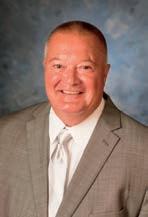
















Call us for all your Ag Lending Needs firststatebank.biz | 815.872.0002 Jeff Townsend Vice President AG Lending Zach O'Brien Agricultural Loan Officer 1693 N. Main St. Princeton GREAT DEALS GREAT SERVICE SINCE 1926 HIGHWAY 52, SUBLETTE, IL 61367 1-800-227-5203 • 1-815-849-5232 VAESSENBROTHERS.COM YOUR CHEVROLET TRUCK HEADQUARTERS SM-LA2085006 ELITE SEED PRODUCTS A BETTER NITROGEN meet Ag Mag 9
Top pest concerns for 2023
 By Tom C. Doran AGRINEWS PUBLICATIONS
By Tom C. Doran AGRINEWS PUBLICATIONS






ANKENY, Iowa — Looking back on the challenges and successes of the previous growing season can be used to gauge what lies ahead in 2023.
Mark Storr, BASF senior technical service representative, covers central Iowa from Minnesota to Missouri and reflected what he saw in his territory last year and what to look out for going forward.

“Every year is a little different and certainly the environment plays into that. Insect pressure in 2022 was not severe, but there’s always a presence of things like Japanese beetles.
We worry about armyworm in the spring in no-till and cover crops. Black cutworms seem to be a little more prevalent in 2023, which like one out of every seven years we need to be concerned with that,” Storr said.
“We had the usual suspects that show up every year, soybean aphids, for example. There hasn’t been a lot of aphid pressure in the dry years we’ve had, and we’ll see if that changes in 2023.
“It’s a dynamic situation with the dry weather we’ve had. We may see a greater grasshopper population in 2023 because they had some pretty good conditions for reproduction last year.”
Corn rootworm is another pest of concern, particularly due to the loss of some effectiveness offered by the Bt trait.
“Mother Nature has allowed the rootworm to be-


come resistant to the Bt, and so we’re seeing a resurgence of that in some areas,” Storr noted.

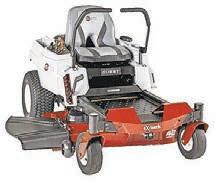
“We generally think of it being more prevalent in cornon-corn fields because the western corn rootworm overwinters and is a pest in continuous cornfields, but a lot of Iowa is rotated areas or corn and soybeans.
“So, we have to worry about northern corn rootworm beetles, as well. They go through extended diapause and the eggs stay dormant and don’t hatch in the soybean year and then wait until the following year when the field is back in corn.”
TAR SPOT
As if there wasn’t enough to look out for in fields, tar spot has also made its presence known, first appearing in Illinois and Indiana in 2015 and


has since spread across the Corn Belt.
The disease robs yield by reducing the photosynthetic capacity of leaves and causing rapid, premature leaf senescence.
“Tar spot is the big question that all growers and retailers are concerned about. It’s a very devastating diseased. It’s been here in Iowa for several years and is becoming a permanent resident because we know that fungal organism overwinters on corn residue and we certainly have plenty of that here,” Storr said.
“The overwintering structure survives and the lifecycle starts all over again this season and when the environment is right, we see potential for infection in this year’s corn crop.”
There hasn’t been any notable major yield losses the last few years in Storr’s area from
SMITH’S SALES & SERVICE 1604 Peoria St • Peru, IL 61354 815.223.0132 LZE810GBV604A3 60”UltraCutSeries4 CuttingDeck 26 HP Vanguard 810 Engine $13,399 Suspension Platform Models Available QZE725GKC50200 50” Series 2 | Cutting Deck 22 HP Kohler 7000 Series KT725 Engine $4,099 Take $300 Off Now! TRACTUS SPECIAL Now through 7/31/23 SM-LA2086497 “Protecting Your Investment In Farmland” SM Douglas D. Ray, AFM Accredited Farm Manager/Managing Real Estate Broker 815-872-FARM (3276) P.O. Box 39 • 226 Prairie Ln. W. • Princeton, IL 61356 www.rayfarm1.com • Email: rayfarm1@comcast.net FA R M M A N A G E M E N T S E R V I C E S , I N C SM-PR2085024 448 N 3973rd Road • Mendota www.mahoneyes.com TRANSFORMING
INTO RENEWABLE
10 Summer 2023
USED COOKING OIL
RESOURCES
Storr
tar spot because it infected the corn plants late in the growing season.


“But as the inoculant continues to build, and that’s where I think we’re at in today’s game, the thing that worries us the most is we’ve had this disease for several years now. The inoculant continues to grow in size, so there are more spores available to land on a susceptible corn plant the next year,” he said.

“So, as we move into the 2023 growing season, that will be something we’ll have to monitor very closely.”











Spore monitoring locations have been set up throughout the Midwest by university plant pathologists to measure when the spores are being formed in the environment. The information can then be utilized to determine fungicide application timing.
PRODUCTS




“If we have a little more moisture this year earlier in the growing season, we may see infections occur earlier than what we’ve experienced in the past,” Storr noted.


“So, this is where we really need to put a plan in place to protect that corn stand with a fungicide like Veltyma or Headline AMP from BASF to prevent that disease from attacking your corn.
“Veltyma and Headline AMP are class-leading fungicides for controlling tar spot. I think you’ll see a lot of use this year regardless of whether or not we have tar spot infections.
“For a product like Veltyma, we can apply it a little bit earlier in the growing season and typically we’re talking about a week or so before tasseling to be getting into that good window for protection of your














corn.


“We used to wait and start making applications around tassel stage which is still where the predominant applications will be made. But with Veltyma, we can apply a little earlier and take advantage of the effectiveness of that fungicide and protect our plants throughout the reproductive stage and give us the best yield benefit.”
EARLY PLANS
Storr was asked what farmers need to be watching for in their fields through this early stage of the growing season.

“Late May is the time to take stock of the pre-herbicide effectiveness and develop a plan to deal with escapes or second flushes with a post program,” he said.


“Know the weed species you have and select the most effective products for those species. Post-herbicide applications are most effective when weeds are small, generally under 3 to 4 inches in height.
“I always recommend using a nozzle that will reduce drift, but still give good coverage. Apply with at least 15 gallons per acre of water to help with the coverage and utilized the proper additives like (ammonium sulfate), (non-ionic surfactants) or crop oils as specified on the herbicide label.

“It is also a great idea to add a residual herbicide like Outlook or Zidua to the post tank mix to extend residual control of weeds like waterhemp.”
Tom C. Doran can be reached at 815-410-2256 or tdoran@shawmedia.com. Follow him on Twitter at: @AgNews_Doran.

Try Our McFlurry with Oreo Cookies 2139 N. Main St. Princeton 800 W. Dakota St. Spring Valley 1503 13th Avenue 2701 E 12th St Mendota Ladd, IL 815-894-2386 Hennepin, IL 815-925-7373 www.northcentralbank.com LOOK TO US FOR ALL YOUR AGRICULTURAL LENDING NEEDS
We are Proud to Support Local Farmers! SM-LA2085002 Ag Mag 11
Deb Schultz













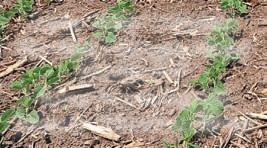

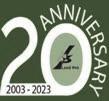






Enduring Strength. Uncompromising Value. Hartman Statewide Buildings, Inc. Ryan Hartman 13062 IL HWY 26, Princeton, IL HartmanStatewide@gmail.com HartmanStatewide.com 815.830.1975 SM-PR2085122 SM-PR2086540 With its heavy-duty construction,long service life and minimal maintenance, a Grasshopper zero-turn mower’s timesaving performance is only the beginning. You’ll enjoy lower operating costs, too. TIME ISN’T ALL YOU’LL SAVE. * WAC. See store associate for details. © The Grasshopper Company Diller-Rod Inc. 701 E. Peru St. Princeton, IL 61356 (815)875-3389 www.dillerrod.com ASK ABOUT ZERO% FINANCING* The Land Pro LLC land brokerage marketing system attracts serious, qualified buyers to every sale, regardless of whether it is an auction or traditional exclusive listing. Our specialized expertise ultimately maximizes your property’s sale price. Visit landprollc.us to find out if your property is suited for an auction or a traditional exclusive listing! Leslie “Chip” Johnston Real Estate Managing Broker 815.866.6161 farms1@comcast.net based in Princeton, Illinois 2681 US Hwy 34 Oswego, IL 60543 www.landprollc.us Ray L. Brownfield ALC AFM Designated Managing Broker Land Auctions Land Brokerage Farm Management Land Consulting Professional Land Specialists Manlius 815-445-6951 Walnut 815-379-9295 We are dedicated to helping our customers achieve maximum success. When you meet and work with a member of the Nutrien Ag Solutions Team, we are confident you will see our strengths first-hand and “Profit from our experience.” SM-PR2085027 Build
Geneseo, IL • 309.944.2184 • www.Hertz.ag • Professional Farm Management • Real Estate Sales and Acquisitions • Farmland Valuations 12 Summer 2023
Wealth Across Generations
Supreme Court ruling narrows WOTUS reach
sued the EPA in 2007, after the agency tried to stop them from building a home on property they purchased, claiming it was on “navigable waters.”
By Tom C. Doran AGRINEWS PUBLICATIONS
WASHINGTON — The U.S. Supreme Court ruled unanimously on May 25 in favor of the Sackett family in Sackett v. EPA that narrows the extent of federal jurisdiction over bodies of water under the Clean Water Act.
The ruling reined in the power of the Environmental Protection Agency, stating that wetlands are not “waters of the U.S.,” as defined in the 1972 Clean Waters Act.
Wetlands need to be directly connected to bodies of water in order to qualify under the statutory definition, according to the majority opinion of the court.
The plaintiffs in the water-regulation case, Chantell and Michael Sackett, first

It was a separate but related case that reached the Supreme Court, which ruled that the homeowners had standing to appeal what the EPA had called a “final decision.”
The decision could have a direct impact on the Biden administration’s WOTUS rule, a regulation that defines which streams and wetlands are protected by the Clean Water Act and relies on a significant nexus test.
At least five federal lawsuits have challenged the WOTUS rule, and more than two dozen states have joined the challenges.
Damien Schiff, who represented the Sacketts at the Supreme Court, said the decision appropriately narrowed the reach of the law.
“Courts now have a clear measuring stick for fairness and consistency by federal regulators. This ruling is a profound win for property
rights and the constitutional separation of powers,” Schiff said in a statement issued by the property rights-focused Pacific Legal Foundation.
EPA Administrator Michael Regan said in a statement that the Clean Water Act has been responsible for “transformational progress” in cleaning up the nation’s waterways.
“I am disappointed by the Supreme Court decision that erodes longstanding clean water protections,” he said.
Agriculture and environmental groups weighed-in on the decision:
“This sensible ruling preserves protections for our nation’s valuable water resources while providing clarity to farmers and others about the process of determining federal jurisdiction over wetlands.”
Tom Haag, president NATIONAL CORN GROWERS ASSOCIATION
“The decision, which strikes down the ‘significant nexus’ test in determining what is
See WOTUS page 14
Wetlands are not ‘waters of the U.S.’
AP PHOTO
Michael and Chantell Sackett of Priest Lake, Idaho, pose for a photo in front of the Supreme Court in Washington in 2011� The Supreme Court boosted property rights over concerns about clean water in a ruling in favor of the couple who sought to build a house near Priest Lake in the state’s panhandle
Ag Mag 13
considered a ‘waters of the United States,’ is a win for agriculture. While regulatory interpretation from the EPA will take time, the SCOTUS decision is a great first step in providing the clarity that the fertilizer industry needs for long-term planning and capital investments that will allow us to continue providing the critical nutrients that feed the crops that feed our communities.”
Corey Rosenbusch, president/ CEO
THE FERTILIZER INSTITUTE OPPOSITION
Manish Bapna, Natural Resources Defense Council president and CEO, said the ruling strips key protections from the Clean Water Act, weakening the law and narrowing its ability to defend the quality of the nation’s waterways.
“The Supreme Court ripped the heart out of the law we depend on to protect American waters and wetlands. The majority chose to protect polluters at the expense of healthy wetlands and waterways. This decision will cause incalculable harm. Communities across the country will pay the price,” Bapna said.
“What’s important now is to repair the damage. The government must enforce the remaining provisions of law that protect the clean water we all rely on for drinking, swimming, fishing, irrigation and more. States should quickly strengthen their own laws. Congress needs to act to restore protections for all our waters.”
Prior to this opinion, the majority of Indiana’s remaining wetlands were under protection of the federal Clean Water Act, but the court’s statement that the Clean Water Act extends to “only those wetlands with a continuous
“Illinois Farm Bureau celebrates today’s unanimous decision by the Supreme Court regarding Sackett v. EPA, which confirms EPA overstepped its authority under the Clean Water Act by restricting private prop-
“Indiana Farm Bureau is pleased that the Supreme Court, in Sackett v. EPA, has narrowed the reach of the ineffective federal clean water regulations. This is a victory for Indiana farmers who, for far too long, have had to deal with complicated and overreaching regulations on their farms. This ruling narrows the jurisdictional
“The EPA clearly overstepped its authority under the Clean Water Act by restricting private property owners from developing their land despite being far from the nearest navigable water. The justices respect private property rights. It’s now time for the
“Cattle producers across the country can breathe a sigh of relief today. Since EPA’s adoption of the ‘significant nexus’ test, cattle producers have had to retain costly legal services
surface connection to bodies that are waters of the United States in their own right” means the majority of Indiana wetlands will not qualify, the Hoosier Environmental Council stated.
“This leaves the fate of most Hoosier wetlands in the state’s hands, and based on recent legislative action, this raises serious concern for the Hoosier Environmental Council. In 2021, Indiana’s General Assembly revised the state wetlands law to signifi -
erty owners from developing their land. Additionally, this ruling is the law of the land and directs the Biden administration to revisit WOTUS and issue a clear rule that doesn’t require farmers to hire a team of attorneys to care for their land.”
Richard Guebert Jr., president ILLINOIS FARM BUREAU

reach of the Clean Water Act and protects private property rights. Now farmers across the country can breathe a sigh of relief as we have been given the clarity we have been seeking and the federal government’s overreach has been put in check. We now know that wetlands need a continuous surface connection to navigable waters to be regulated.”
Randy Kron, president INDIANA FARM BUREAU
Biden administration to do the same and rewrite the ‘waters of the United States’ rule. Farmers and ranchers share the goal of protecting the resources they’re entrusted with, but they deserve a rule that provides clarity and doesn’t require a team of attorneys to properly care for their land.”
Zippy Duvall, president AMERICAN FARM BUREAU FEDERATION
to determine if water features on their property are federally jurisdictional. Today’s Supreme Court opinion refocuses the Clean Water Act on protecting our water resource through regulatory clarity.”
Todd Wilkinson, president NATIONAL CATTLEMEN’S BEEF ASSOCIATION

cantly reduce protection for wetlands. This year there was an attempt to reduce it further, but that attempt was averted. This despite the fact that Indiana has already lost close to 90% of its original wetlands,” the HEC said.
“Indiana needs the flood protection provided by wetlands more than ever. According to the Purdue Climate Change Research Center, average annual precipitation in Indiana has increased 5.6 inches since
the 1890s and is on track to continue increasing.
“The HEC will continue to raise awareness among the public and elected officials about the value of Indiana’s remaining wetlands and will continue to fight to protect this priceless portion of our state’s natural infrastructure.”
Tom C. Doran can be reached at 815-410-2256 or tdoran@shawmedia.com. Follow him on Twitter at: @AgNews_Doran.

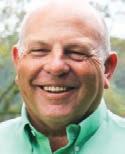
14 Summer 2023
Wotus FROM PAGE 13


















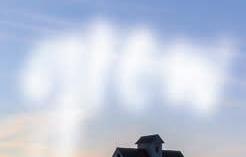

























Start Building Your Retirement Home Now! Customize your home! Single family homes for sale in age restricted community. The unique features of The Villas include: • Spacious 2 or 3 Bedroom Floor Plans • Full-Size Kitchen • Attached 2-Car Garage • Invitations to Events at Retirement Campus • Membership to A.J.’s Fitness Center • Grounds Maintenance Call for more information on The Villas and to schedule your tour. 140 N. 6th St. Princeton 815-875-6600 2322 N.Eastwood Dr. Streator 815-672-1900 3230 Becker Dr. Peru 815-224-2200 29408 3450 East Street, LaMoille, IL Farm Drainage Waterways Structures Land Clearing Pond Excavating Boring SM-LA2084584 PROPHETSTOWN 114WestThirdStreet (815)537-2348 GENESEO 700USHighway6East (309)944-0580 MORRISON 1100EastLincolnway (815)772-3700 www.FarmersNationalBank.bank ForAllYourAgBankingNeeds • OperatingforCropsandLivestock • EquipmentandIrrigation • Buildings,LivestockandGrainFacilities • FarmLand • Promptandlocaldecisionswithaccess toasmuchas$10millionperfarmcustomer TOP 100 Ag Bank in the U S EXPERIENCED•RESPONSIVE•TRUSTED FarmersNationalBankAgLenders ServingNorthwestIllinoisSince1902 Ag Mag 15
Versatility runs in the family.
Fungicide put to test
On-farm trials reveal benefits
 By Tom C. Doran AGRINEWS PUBLICATIONS
By Tom C. Doran AGRINEWS PUBLICATIONS

































OGDEN, Iowa — Strip trials have become standard operating procedure for the Heineman family to test products and practices on their farm.
Brett Heineman, along with his father, Craig, and uncle, Paul, operate the family’s central Iowa farm where they grow corn and soybeans. In a recent interview with Heineman facilitated by BASF, the fifth-generation farmer, spoke of the benefits of using fungicides based on on-farm trials.
What are your experiences with fungicides?
Heineman: We like to test stuff in our operation. We’ll do strip trials. We do 90-foot strips of whatever we’re trying, then we’ll have a 90-foot control strip and we’ll alternate that through the field. We usually do 40 to 80 acres of strip trials, depending on what we’re doing, to get a good replication of what we’re trialing.
We have a plan in place where we will test things for three years. If they show profitability for three years then we implement them into our program. That’s what happened with fungicide.
What kind of yield bump have you seen on average by using a fungicide?


Heineman: We’ve probably ranged from 5 to 12 bushels, depending on the year.
When do you decide to pull the trigger on a fungicide application?
Heineman: We want to spray it by V10, but if we see pressure is moving in earlier, we’ll spray earlier. It’s more important to get it on before you have the problem then put it on after you have the problem.
What kind of disease pressure have you seen in your area?
Heineman: Right now, northern corn leaf blight is kind of our biggest deal, but tar spot has been creeping in. Tar spot showed up late everywhere last year.
So, this year we’ll probably be spraying two passes of fungicide to try to help control that because I know that stuff can be really nasty.
What have you seen as the overall benefits of a fungicide application?
Heineman: Standability is one thing, but really my big goal is plant health. In a perfect world, what I’m aiming for is to have a green plant from top to bottom and harvesting 18% corn. That gives us the biggest bang for our buck and gives us the biggest yield.
We cover a decent amount of acres and so standability is also a nice thing about having a fungicide.
Some of our biggest successes with fungicides from what we see is getting it out before there’s any disease pressure, and that’s also where we get our biggest bang for our buck.
What is your go-to fungicide product?
Heineman: It’s whatever makes sense because some years one is cheaper than another. It just all depends.

How is your growing season going so far?
Heineman: We planted our soybeans first and they’re all up into their first trifoliate and look really good. We planted some corn into cooler conditions than I would like, so it’s going to hurt our even emergence some, but that’s just kind of the nature of the beast.
Right now (on May 19) I’m planting seed corn. All of our commercial corn and soybeans are planted.
Tom C. Doran can be reached at 815-410-2256 or tdoran@shawmedia.com. Follow him on Twitter at: @ AgNews_Doran.
See all of the versatile BX Series sub-compact tractors in our showroom. Part of our tractor lineup rated #1 for durability and owner experience in the U.S.* • Variety of available attachments • Swift-Tach Loader is easy to install and remove • Easy-to-use hydrostatic transmission • ROPS height fits easily in standard size garages Streator Farm Mart 1684 N 17th Rd Streator, IL 61364 815-672-0007 www.streatorfarmmart.com KubotaUSA.com *Award based on 2021 Progressive Farmer Reader Insights Tractor Study. © Kubota Tractor Corporation, 2023. This material is for descriptive purposes only. Kubota disclaims all representations and warranties, express or implied, or any liability from the use of this material. For complete warranty, safety, incentive offer and product information, consult your local dealer or go to KubotaUSA.com. SM-PR2084042
we do more®. 16 Summer 2023
BX
Series 16.6-24.8 Gross HP Easy operation
Together
Heineman







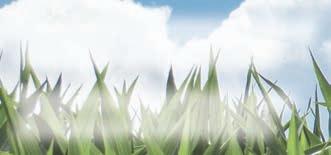
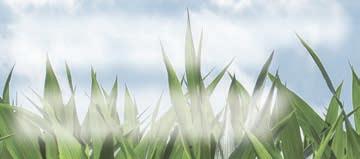









A local Company, with local people, making local decisions, offering farm and home insurance. Hanford Insurance Agency Geneseo • 309-944-8670 VanDeRostyne Insurance Atkinson • 309-936-7220 Mark Gillis Insurance Agency Rochelle • 815-561-2800 The Cornerstone Agency Tampico • 815-772-2793 Dykstra & Law Agency Fulton • 815-589-2200 Sauk Valley Insurance Services Dixon • 815-288-2541 Prophetstown Farmers Mutual Contact one of our Qualified Agents to see how they can help Founded by Farmers, for Farmers Meeting all of your Farm Insurance Needs SM-ST2085153 To Find an Agent NEAR YOU Log on to www.bradfordmutual.com or Call 815-456-2334 Member Owned and Operated Since 1869 “154 Years of Neighbors Helping Neighbors” Ag Mag 17
Identify, avoid and manage troublesome wild parsnip

 By Chris Enroth
By Chris Enroth
I love parsnips. Often parsnips, large white carrot-like root vegetables, are substituted for celery in my soups and stews.
The cultivated parsnip that we eat heralds from the appropriately named wild parsnip, Pastinaca sativa. However, wild parsnip is a plant to avoid.
The wild version of cultivated parsnip can leave those who encounter it with burn-like blisters on their skin.
Severe cases appear somewhat gruesome, though according to some, it is still not as bad as the itch of poison ivy.
Standing next to wild parsnip will not give you burning blisters. A person must make skin contact with the sap of the plant from a broken leaf or stem.
The combination of sap on your skin and exposure to UV light causes phytophotodermatitis: an interaction between plants (phyto) and light (photo) that induce skin (derm) inflammation (itis). The effects are likened to a severe sunburn.
Wild parsnip is closely related to Queen Anne’s lace and has a similar umbrella-shaped flower, though wild parsnip’s flower color is yellow and it blooms earlier in the summer.
Wild parsnip’s stem is slightly hairy, grooved and 2 to 5 feet tall. Leaves are coarse, with saw-toothed edges.
Plants can be found throughout Illinois invading prairies, oak savannas and fens, as well as roadsides, old fields and pastures.
Since the actual hazard lies in the sap of wild parsnip, exposure can be mitigated by wearing gloves, long pants and long-sleeved shirts when working outside, in fields, or in overgrown areas that contain this plant.
Plan weeding activities for later in the evening during low levels of sun-
light to avoid activating the blistering process.
Wet sap is required to cause injury. Wild parsnip that has been cut and allowed to dry is safer to handle.
Do not wait too long or forget to dispose of cut wild parsnip as seed can develop while the cut plant lays on the ground.
Avoid using string trimmers where you may encounter wild parsnip. The pulverizing, flinging action of string trimmers sprays plant parts and juices everywhere. Operators are often left speckled with blisters and red rashes.
If you are exposed to wild parsnip sap, wash the area that came in contact immediately. If you are too late and begin to feel the burn of wild parsnip sap, contact a physician for wound care recommendations.
Check landscapes periodically for the presence of wild parsnip. Just because it isn’t there now, does not mean it won’t germinate next week.
Mechanically control wild parsnip
by cutting the root 1 to 2 inches below the soil surface. Brush-cutters can be used for large populations before the seed sets.
When mowing dense stands of wild parsnip, eye protection and possibly a mask can protect your eyes and lungs. For smaller populations, cut off the flowering heads and dispose of in a landfill.
The little rosette of young wild parsnip can be spot treated with broad spectrum or broad-leaf specific herbicides. Contact your local University of Illinois Extension office for recommended active ingredients.
Since parsnip is a biennial, all control activities should be done before it starts flowering or at least during the early flower stage. The basal rosettes can also be controlled in the fall to prevent flowering the next year.
18 Summer 2023 Lawn & Garden
Chris Enroth is a horticulture educator for University of Illinois Extension in Henderson, Knox, McDonough and Warren counties.
UNIVERSITY OF ILLINOIS EXTENSION PHOTO/EMILY SWIHART
Wild parsnip can be found throughout Illinois invading prairies, oak savannas and fens, as well as roadsides, old fields and pastures�
Enroth
Overlooking nothing. Ready for everything.


























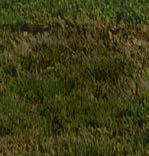
















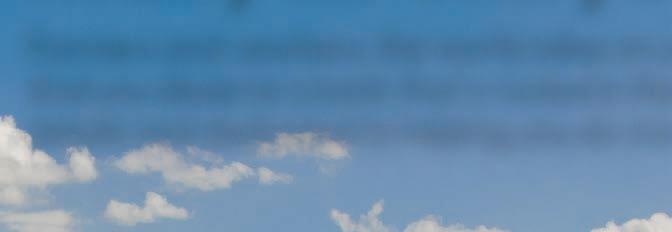

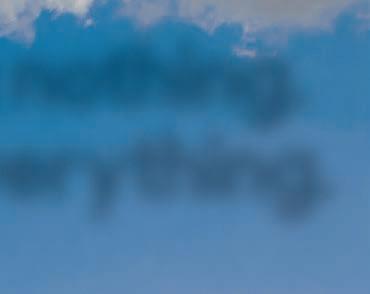


Farmers and ranchers, the world relies on you. And you deserve a bank that’s rooted in the details and dedicated to helping you do more.




























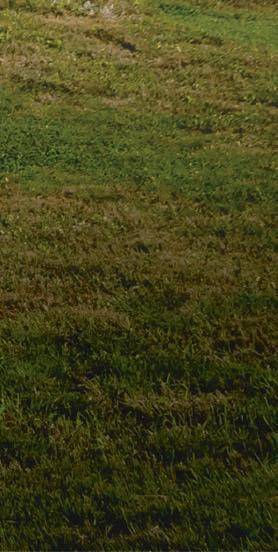
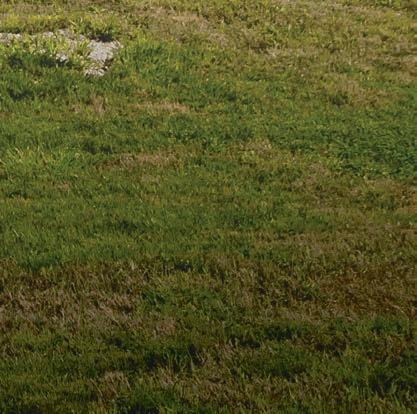

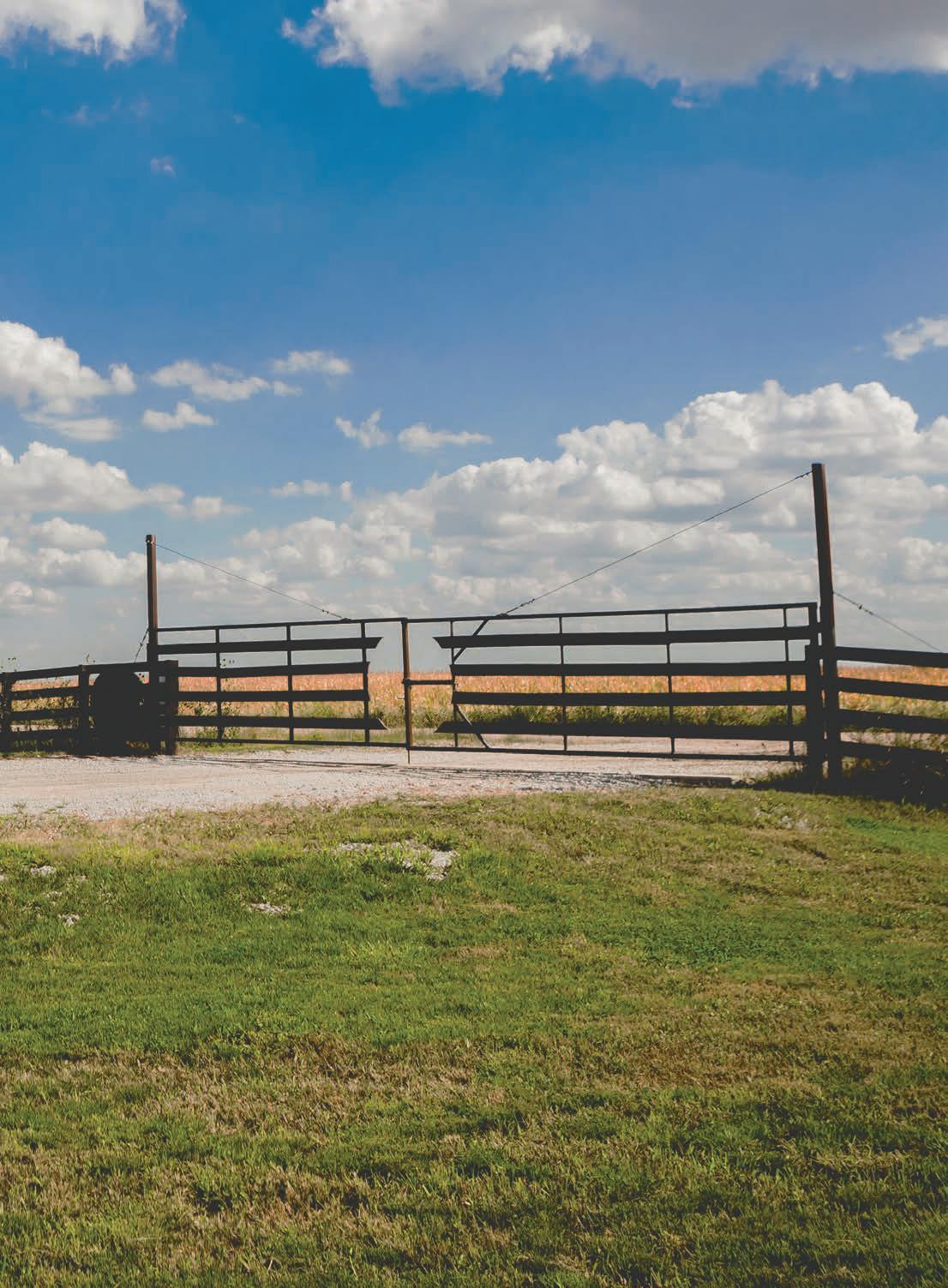
Member FDIC /agribusiness Ag Mag 19
Groundbreaking for new Mississippi River lock
BLOOMINGTON, Ill. — After decades of advocacy, education, diligence and tenacity, the Illinois Corn Growers Association celebrated the groundbreaking of brand-new, 1,200-foot Lock 25 along the Mississippi River near Winfield, Missouri.
“The important advancement would not be happening without the partnership of the Waterways Council Inc., as well as the important coalition members who have joined corn farmers in pursuit of upgraded river infrastructure along the way,” ICGA stated.
“Many thanks to the MidAmerica Carpenters Regional Council for their tireless advocacy for the jobs this project will provide, as well as the conservation groups that joined our voices asking for environmental restoration to accompany this project.”
Finally getting to this point is cause for celebration, said Matt Rush, ICGA president and farmer from Fairfield.
“I am speaking for all corn farmers — corn farmers that attended barge tours, corn farmers that called their elected officials on this issue, corn farmers that walked the halls of Congress with their association to ask for new locks and dams —
when I say how excited we are to see this progress,” Rush said.
“Illinois is the largest corn exporting state in the nation, and those significant international sales are built on the network of our river system.”
Rush noted the river transportation provides the lowest cost, greenest, most efficient means to transport corn from Illinois to global customers, but the locks and dams that empower the industry are broken.

The groundbreaking ceremony celebrates one more step towards the updated infrastructure that will make farmers competitive in the global market.
Lock and Dam 25 was opened in 1939 and is the most southern lock and dam on the Mississippi River with a single, 600-by-110-foot lock chamber.
“Over time, we’ve done analysis on the cost of inefficiencies (on a per-lock basis). Those costs change, but it’s about a penny to a penny and a half per bushel per lock. By the time we upgrade all seven locks, farmers are gaining about 8 to 10 cents per bushel of efficiency to the system and they should see at
least a penny per bushel in gained efficiency when the new 1,200-foot Lock 25 at Winfield is operational,” said Jim Tarmann, Illinois Corn managing director, who has worked on this issue for most of his career.

Former ICGA and National Corn Growers Association leader Garry Niemeyer from Auburn remembers hours, days and weeks of advocacy for upgraded locks and dams.
“When we would walk into a congressional office with a member of the Carpenter’s Union, sometimes the member would be surprised to see us working together. But I’m a farmer and I needed to move my grain. He’s representing guys and gals that needed jobs. This is a project that we both needed and I’m excited to see progress being made,” Niemeyer said.
The new lock construction is part of the Navigation and Ecosystem Sustainability Program, funded by the Inflation Reduction Act.
The ICGA noted special thanks to Illinois Farm Bureau, Illinois Soybean Association, Illinois Fertilizer and Chemical Association, and Grain and Feed Association of Illinois for their advocacy partnership on this river infrastructure need.
U S ARMY CORPS OF ENGINEERS PHOTO
Groundbreaking was recently held for construction of a new, 1,200-foot lock along the Mississippi River at Winfield, Missouri The lock and dam currently has a 600-by-110-foot lock chamber and was built in 1939
20 Summer 2023

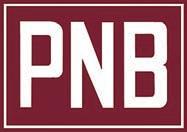




















PeoPles NatioNal BaNk of kewaNee Kewanee • Annawan • Bradford • Dwight Manlius • Reynolds • Seneca • Sheffield • Tampico “The Bank for All the People” Get the financial solutions you need to achieve the success you deserve. NMLS # 462098 SPECIALIZING IN | FARMLAND | TIMBER | RURAL HOMES LandGuys, LLC of Illinois (471.021292) | Springfield, IL LandGuys, LLC is licensed in IL, IA, WI & TN ©2023 LandGuys, LLC | 4331 Conestoga Dr., Springfield, IL 62711 | 217.899.1240 | LG00398 LandGuys.com AS AN INVESTMENT WE UNDERSTAND LAND NATHAN CUMPTON ILLINOIS LAND BROKER 815.878.6780 nathan@landguys.com Contact me for a FREE report to check the value of your property! your property! Lilja Tiling & Excavating, LLC 2000 Welland Rd., Mendota, IL 61342 Office: 815.539. 3485 • Email: liljatilingllc@gmail.com Now Machine Installing Dual Wall Tile Over 140 years of farming innovation 1501 1st Avenue • Mendota 815-539-9371 HCCINC.COM Ag Mag 21
Ag conditions mixed across Federal Reserve districts
By Tom C. Doran AGRINEWS PUBLICATIONS
CHICAGO — The outlook for farm income fell in most Corn Belt districts on lower commodity prices and increased costs, according to a survey of Federal Reserve districts.

Results of the survey were published in the Federal Reserve’s Beige Book on May 31.
T he survey report was prepared at the Federal Reserve Bank of Chicago based on information collected on or before May 22.
Here are the agricultural-related comments from districts in the Corn Belt.
CHICAGO
Expectations for Seventh Federal Reserve District’s farm incomes in 2023 fell some as prices for key products moved lower.
Corn and soybean prices decreased, as rapid fieldwork and planting pr-ogress heightened expectations for a large harvest.
S oft red wheat prices remained weak, but hard wheat prices rose due to drought affecting much of the U.S. wheat crop and uncertainty surrounding another exten -
sion of the agreement allowing exports out of Ukraine.
There were lower prices for eggs and dairy products, especially cheese. Hog prices increased from a low level and cattle prices moved higher.
“In light of higher interest rates, contacts expected farmers to conserve working capital to minimize the need to t ake out farm operating loans. There were reports of slower farm machinery sales, but also shortages of some types of equipment,” the survey summary stated.
Prices for farmland were higher again as demand remained solid and inventories of farms for sale were limited.
The Seventh District of Chicago includes the northern two-thirds of Illinois and Indiana, all of Iowa, the southern t wo-thirds of Wisconsin and Michigan’s Lower Peninsula.
ST. LOUIS
Overall conditions in the Eighth Federal Reserve District have remained unchanged, but the outlook has weakened slightly since our previous report.
Most agriculture contacts surveyed reported that their costs, including labor, have increased, which has contributed to the slightly worsening outlook.
Th e percentage of row crops planted has increased
as expected since the previous reporting period and is up slightly from this time in 2022. The progress of acres planted is mixed across the district.
Some states, such as Missouri and Illinois, have improved strongly over last year, and the other district states have fared slightly to materially worse.
The St. Louis Federal Reserve District includes the southern parts of Illinois and Indiana and eastern half of Missouri, as well as parts of Tennessee, Arkansas, Kentucky and Mississippi.
MINNEAPOLIS
District agricultural conditions were solid heading into planting season. About half of respondents to a survey of agricultural credit conditions reported that farm incomes increased in the first quarter from a year earlier.
“Lenders noted improvements in liquidity and in the financial condition of producers, but they were concerned about commodity price volatility and rising interest rates,” the report stated.
Heavy snow over the winter and persistent cold weather will significantly delay spring planting in some areas, contacts reported.
The Minneapolis-based district includes all of Min -
nesota, the Dakotas and Montana, the northern one-third of Wisconsin and Michigan’s Upper Peninsula.
KANSAS CITY
Conditions in the 10th Federal Reserve District agricultural economy remained strong through early May, but showed signs of moderating.
Corn and soybean prices declined slightly since April and were moderately lower than a year ago.
Prices moved down recently based on reports of ideal planting conditions throughout most states and early projections that production could hi t record levels due to historically strong yields.
Wheat prices increased slightly since April, but poor yields caused by drought could limit revenues, particularly in Kansas and Oklahoma.
Profits among cattle producers continued to be pressured by high feed costs and drought that damaged pasture conditions throughout the region.
The Kansas City district includes the western part of Missouri, Kansas, Nebraska, Oklahoma, Wyoming, Colorado and northern New Mexico.
Tom C. Doran can be reached at 815-410-2256 or tdoran@shawmedia.com. Follow him on Twitter at: @AgNews_Doran.
22 Summer 2023
Rural Issues

after much-needed
Much needed rain fell on our farm a couple of weeks ago, bringing us out of the “extreme drought” category and back to “severe drought.”
The earth was thirsty, and the hay crop we are cutting this week will be half of what it was last year.
Last year produced less tonnage than the previous year. Part of that is due to drought and part due to a late freeze that “nipped” the grass.
According to the U.S. Department of Agriculture, most of us are facing a shortage of hay. U.S. on-farm hay stocks are at historically low levels.


On May 1, the supply was



14.523 million tons, a decrease of 2.2 million on the year because of increased demand and lower production. That is the second smallest U.S. supply since the USDA started keeping track of hay stocks in 1950.
Wow, that is not the kind of record we want to break. I have talked to many cattle men and women who are selling a few head of cows and others who are full on liquidating their herds.
It is especially sad when I see the young guys calling it quits. Once they are out of the cattle business, it’s unlikely they will return.
Jack Harrison, the owner of the Callaway Livestock Center in Kingdom City, Missouri, told Brownfield Ag News head numbers are up at his sale barn.

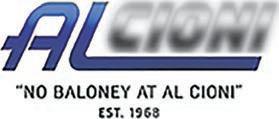
“About every week, our cow numbers have been double what they’ve been one year ago,” he says. “Feeder
numbers are about 20% higher than they were one year ago, and people are selling fall calves early, saving all of the feed they can for cows.”
Because of the drier spring, we did get our garden planted earlier. The rain a couple of weeks ago brought the peas, beans, beets, onions, radishes and other crops back to life.
You can water your crop with mineral-rich well water and keep it going, but it takes rainwater straight from the sky to truly give it the drink it needs and get those tiny seeds in dry soil to awaken and grow.

We can do all the right things. We can get fertilizer early, select the right seed for the soil and location, and manage the hay stocks we have on hand.

However, none of that matters if we do not receive the necessary rainfall. None of that matters if we get an

overabundance of rainfall and are unable to harvest the crops at the right time in its maturity.
We can plan and do our best to manage risk, but ultimately it is out of our hands. Many farmers experience a range of emotions during a challenging growing season.
In this case, we must use the plural seasons for those in some parts of the Midwest, as drought persists over the years.
Some people get angry and frustrated. Others experience great sadness and feel guilty for failing.
Those are normal emotions, but if the weight becomes too much to bear alone, please reach out and talk to someone.
The 988 Crisis Lifeline is free. Make the call.
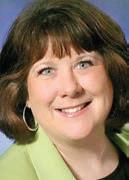
Tonica - 815-442-8211 • Oglesby - 815-883-8400 • Lostant - 815-368-3333 illinistatebank.com Let us evaluate your current rates to see if we can help you save. Contact Dan or Alan at Illini State Bank today! Is Your Ag Line of Credit Costing YOU? Member FDIC SM-LA2086581 504 S. McCoy St., Granville 815-339-2511 alcioniford.com MAKE SURE YOU HAVE THE RIGHT EQUIPMENT BEFORE GOING OUT TO THE FIELD! Come see your trustworthy President Award winning Ford Dealer! ELMORE ELECTRIC 815-643-2354 ELMORE HVAC 815-643-2631 205 North Street - Dover, Princeton, IL 61356 www.elmoreelectric.com Like us on Facebook Free Estimates Available SM-PR2087037 Home: 815-379-9317 • Cell: 815-303-9321 Answering Machine: 815-379-2350 Email: haroldrollo@yahoo.com www.rolloconstruction.com AGRICULTURAL • RESIDENTIAL EQUESTRIAN • COMMERCIAL Custom Buildings for All Your Storage Needs Call Now for a Free Quote SM-PR2085117 Ag Mag 23 Sunshine
rain
Cyndi Young-Puyear is farm director and operations manager for Brownfield Network.
Cyndi YoungPuyear
Illinois’ longest operating lumberyard continues to thrive along Peru’s historic riverfront. Maze Lumber has been providing top quality building materials to Illinois Valley contractors and homeowners for 175 years, still owned by the founding fathers (Maze). Located in a 15,000-square foot showroom and office, we offer building materials for the modern home as well as a full line of the traditional lumber items used in home building, commercial construction, and industrial applications. Our experienced sales staff takes pride in their ability to provide knowledgeable assistance along with prompt delivery at reasonable prices.












ACES BATHROOMS EX TERIOR DOORS CABINETRY& COUNTERTOPS WINDOWS STONE, SIDING& ROOFING KITCHENS DECKING& FLOORING INTERIOR DOORS ma ze lu mber .c om Wa te r St re et , Pe ru | 81 5- 22 3- 17 42 SM-LA2084477 5
24 Summer 2023
BU IL D IT ON CE BU IL D IT RI GHT FIREPL
1848-2023






























































 By Tom C. Doran AGRINEWS PUBLICATIONS
By Tom C. Doran AGRINEWS PUBLICATIONS


















































































 By Tom C. Doran AGRINEWS PUBLICATIONS
By Tom C. Doran AGRINEWS PUBLICATIONS
























 By Chris Enroth
By Chris Enroth











































































